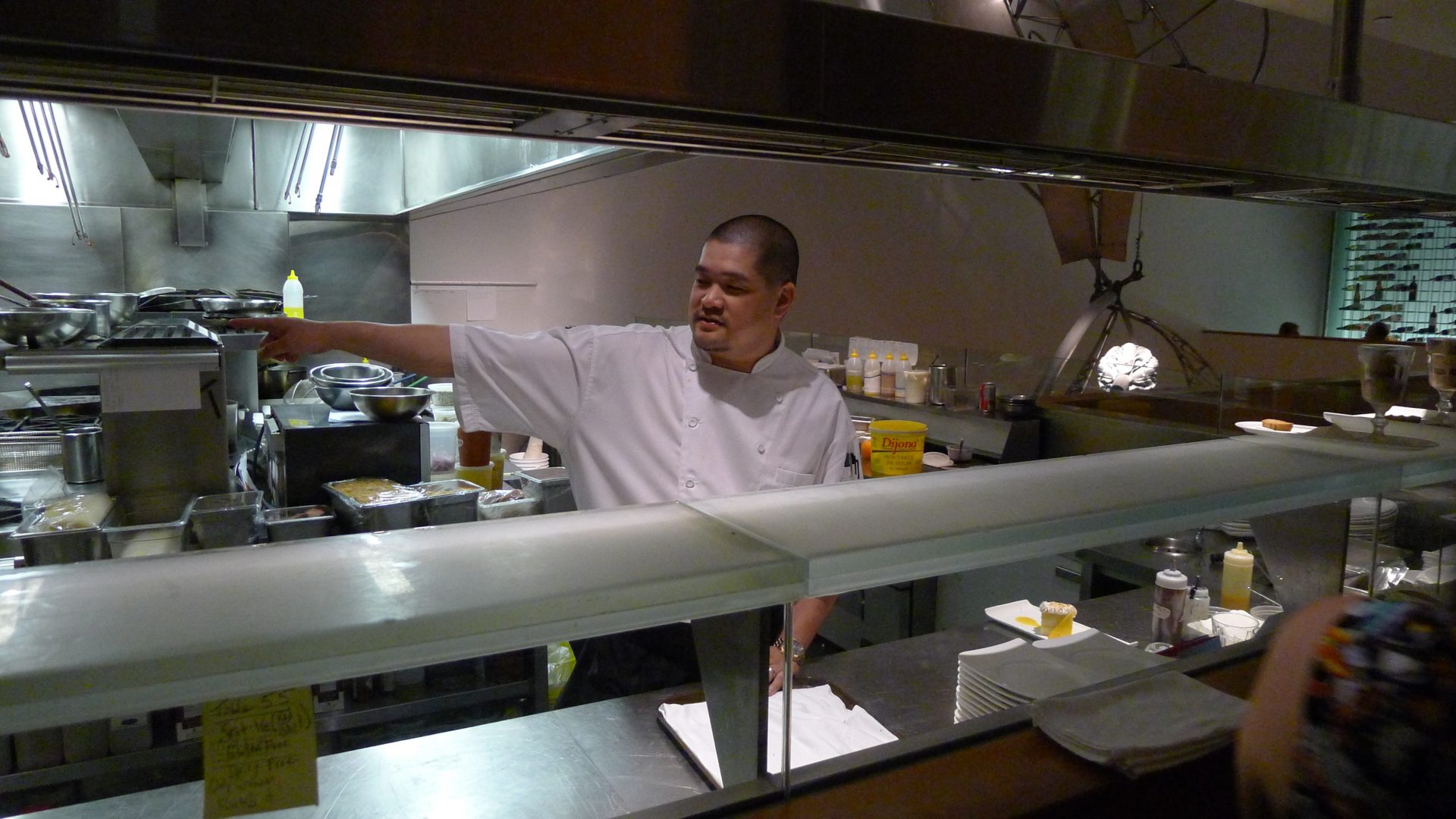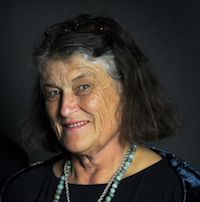by John Lee
Read Part 1 of John Lee’s Cooking in Prison series here.
“I’ll be there in about 20 minutes” was the estimate given to me by Ed from the local taxi company. Killing time at the prison guard station at Pittsburgh, Ontario was a little surreal given that I could simply make a phone call and go as I please. The import of this was not lost on me given my present vantage point.
This journey actually began months before while I was on another assignment. Jesse, a cook whose acquaintance I had made at the Elmhirst’s resort was also a full time employee at Warkworth Penitentiary’s kitchen. He detailed for me the dietary as well as the environmental conditions encountered there every day; eggs shelled one at a time from real eggs, stocks, sauces and other examples of real scratch cooking all served with a side of verbal abuse from the inmates he was cooking for. It was, to say the least, inspiring and I vowed to make my way to the penitentiary for my next story idea. However the euphoria of having found my magnum opus soon wore off as I now had to contend with a federal agency and its agents.
Not unexpectedly, I was informed by the Correctional Service of Canada liaisons director that Warkworth was going through some administrative changes and that I would have to wait patiently for their response. The steam was fading and the horizon started looking bleaker with every passing week for my greatest journalistic endeavour to date. But the slow death of one idea gave birth to another. The director, Holly Knowles, called me back to ask if I would be interested in travelling a little further out of my area and did I know that there was a full cooking program in effect at two separate institutions in the Kingston area and would I be interested in speaking with the staff and some selected candidates about the their experiences? Imagine my surprise.
And now, as my car winds down the roadways of the Kingston outskirts, Ed and I chat about the over-abundance of prisons in the area and their inhabitants. Everyone in town knows someone who works there: a brother, a sister, a cousin, or friend of a friend. As a neophyte to the area, I am slowly beginning to grasp the true scope and prevalence of prison life on both sides of the proverbial fence.
Joyceville and Frontenac stand on the same plot of government soil. Frontenac looks like Canada’s Wonderland minus the rides but is replete with a medieval castle facade as well as a surrounding wall topped with razor wire (eat your heart out Wonderland). Joyceville, my final stop for the day, looks like every other piece of government funded architecture found in small towns and suburbs: brown and boring. I quickly checked in was escorted to the kitchen where they had been expecting me for the last half hour.
I am met by two CSC staff who seem very intent on keeping a close eye on me. With the pleasantries quickly dispensed, Wanda introduces me to what can only be her shining stars. But even before I can inventory my grocery list of questions, a flotilla of plates comes out of the walk-in and is carefully arraigned on a small table complete with risers and a braided fish made from dough.
What I am looking at is the work of one Michel Lafond. M. Lafond is an imposing man with shoulders broad enough to block out the sun. Bespectacled and dignified in his whites, he slowly begins to describe what he has plated specifically for my visit. I’ve witnessed some of the most nasty, brutish cooks (Marc Thuet, Marc Thuet and Marc Thuet) morph into Julia Childs when detailing their artful creations but I am a little taken aback to hear that “the heirloom potato salad is topped with fiddleheads and edible pansies.” That’s right, he said pansies. Mais oui.
In fact, most of his dishes bespeak an early fascination with deconstruction (not unlike some chefs who could be criticized for “pulling an Adjey”). He wants to show all the parts without obscuring the details. One can easily forgive some minor criticisms when one realizes that he has learned as much as he without the benefit of the internet, fancy cookbooks (of which there is dearth in the library) and with only textbooks and television to guide him. Given the environment in which these dishes took shape, that such a gentle hand is displayed openly where it could easily become a liability is quite remarkable. As remarkable as the person without whom none of this would be possible.
“Chef Wanda” puts into her students all that she is and stands for. She sources local ingredients and brings in the seasons best for her class to learn from. She extols the virtues of good honest cookery in the way that she teaches and inspires her students to know who they are and not simply what they do. She wants them to believe in themselves as much as she does.
John Reid has benefited greatly from this sort of mentorship. While as an inmate at Bath Institute, a woman named Philomena recognized John’s interest in food and encouraged him by supplying resources and materials. After many years of self-study and with Philomena’s help, he finally made the transition to the culinary program here at Joyceville during his tenth year of incarceration. His youthful nature does not betray the fact that he has spent almost half of his young life behind bars. What’s obvious though is that he is dedicated to making food his life.
For starters, he is sure that he does not want to work in a “box store” restaurant but for a small independent operator. He wants to build relationships with farmers and producers using only what is in season and locally available. He knows what things should smell and taste like and he wants to explore Asian cookery and cuisine. He wants to try some proper Indian food when he is released and will continue to enrol in cooking classes. One cannot accuse him of not having had the time think these things through.
I consider what the future holds for all four offenders I’ve met today [see also Part 1 -Ed.] and whether they are in for a collective shock. Their aspirations are not grand or delusional. There is a cautionary tether to their plans borne from disappointments collected over time. Simpler plans yield a higher degree of success. Yet there is nothing simple about how these four ended up here in the culinary program.
As evidenced in my final Q & A they are all, in one sense, revisiting a time in their lives when they felt loved and were full of promise.
“What is your favourite food memory?”
John: “Making perogies with my mother.”
Michel: “Baking with my mom.”
Through the efforts of Chef Wanda and the culinary program, they are once again cared for and can envision a life far from the walls and confinements of their current address. Only time will tell what lasting effect the program will have on its graduates but one thing is sure: they all have a relationship with food that goes deeper than learning a trade.
Having said my good-byes, I now have a three hour wait before my train arrives to take me home. As I stroll through the streets of Kingston, life goes on around me and I am emboldened by what I have absorbed throughout the course of my time here. For someone who gets upset when a pizza (or taxi) is 5 minutes late, all of a sudden, three hours doesn’t seem that long. Maybe Kingston is not such a bad place after all. Maybe.
 Chef John Lee is the President of Chippy’s Fish & Chips
Chef John Lee is the President of Chippy’s Fish & Chips










hello im am doing an essay for a college program on corrections canada. im doing a part on the history of it and was wondering if the pittsburgh institute has a fence around it? im from that area but moved away and just cant remember please let me know thanks for the help
Hello Mark,
There are fences at Pittsburgh but not in all areas. As it is a minimum security prison, inmates there are generally scheduled for either parole or release. It is a way of re-integrating the inmate back into society and socializing them with other inmates. They live in group homes and are responsible for shopping, cooking, cleaning and other domestic duties. Hope this helps you with your project.
John Lee
Hi, found a way to bring Glorystar Faith Programming that can go to the inmates without installing the 92 cm satellite dish with receiver that is usually used outside the building my website is chadoxman.com feel free to copy the page code for those would like to view almost all the channels of Glorystar on an a one page view or watch via chaoxman.com . 🙂